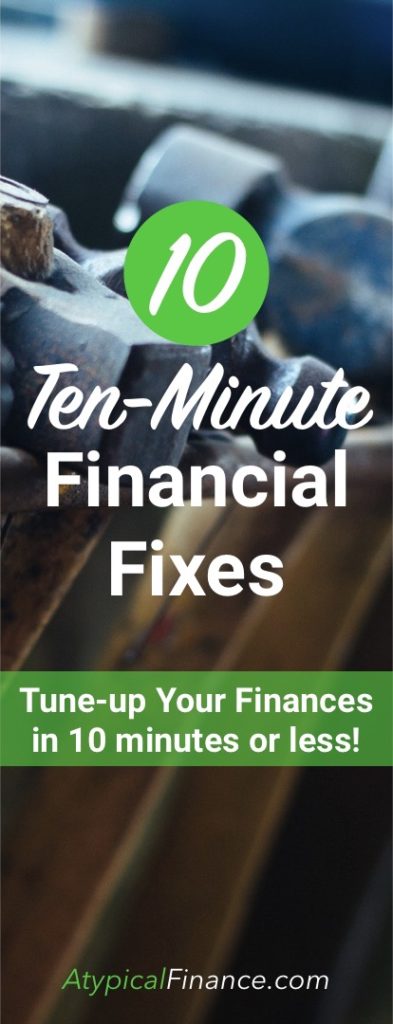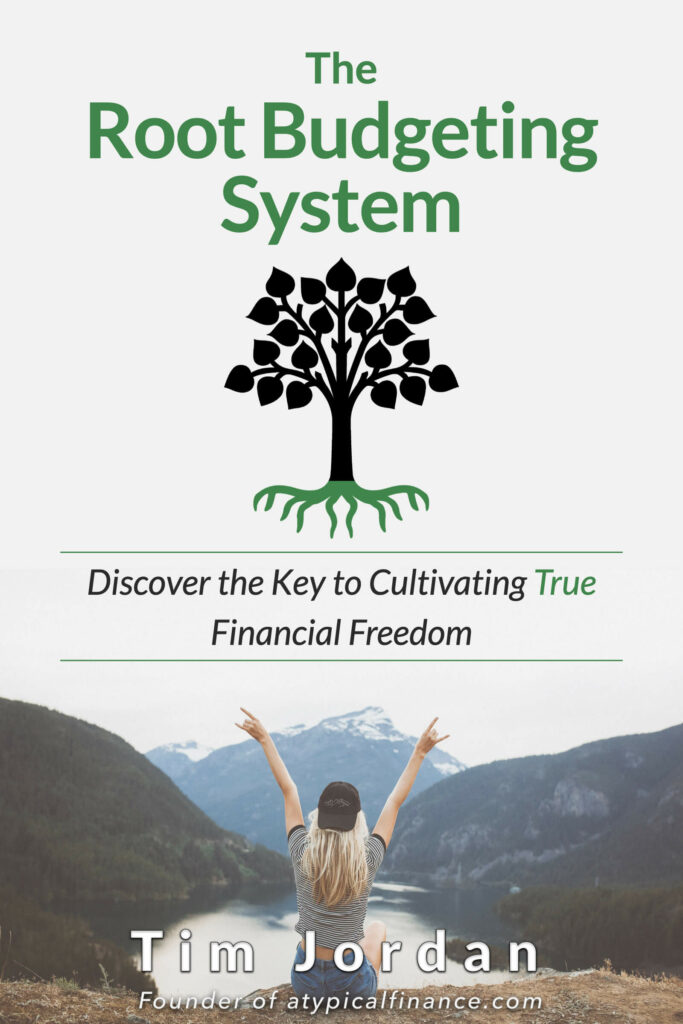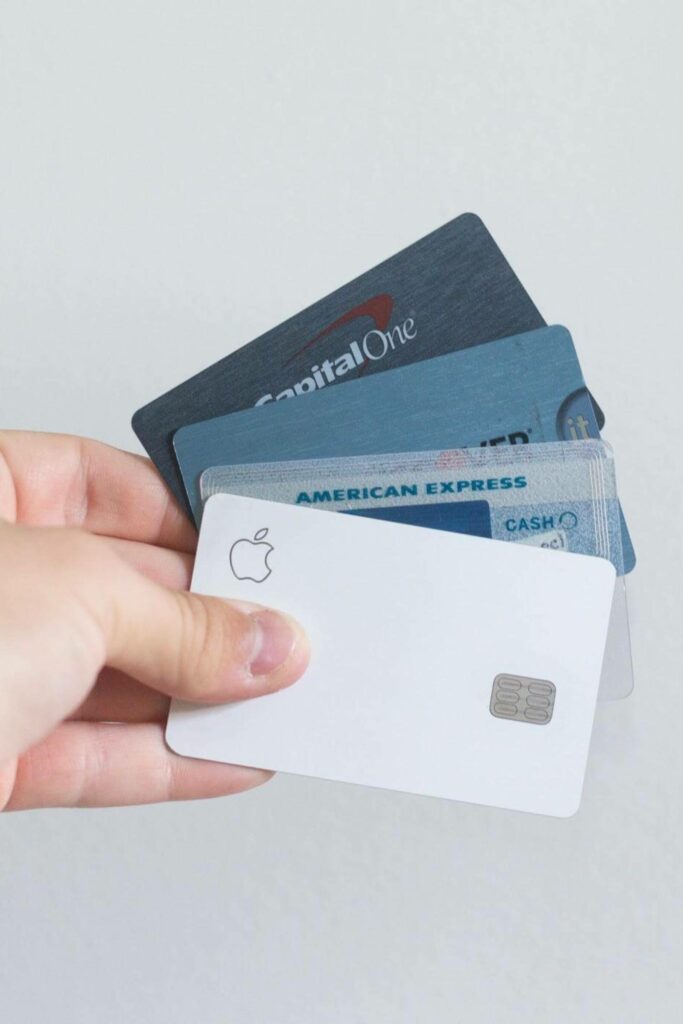Let’s be honest. It takes work to get your finances under control—and sometimes it can take a lot of time.
It doesn’t help that these days a lot of us (me included) feel so strapped for time that we don’t think we have the time to fix financial holes in our budgets.
So what do you do when you have both a need to work on your finances and the need for more time?
Similarly to goals, I recommend breaking your financial fixes down into smaller, more manageable chunks of time. By taking just 10 minutes out of your day or evening and working on one specific fix, there is more opportunity to get more done.
And you’ll see a lot more progress.
Here are 10 financial fixes you can do in just 10 minutes each.
1. Track Your Spending
This one can be pretty difficult for some people, not necessarily because of the work involved (after all it can only take 10 minutes), but because of the revelations that ensue afterward. Back in 2014, I took 10 minutes to do this and discovered I was unintentionally spending close to $600 dining out each month when I couldn’t really afford it.
Yikes! No wonder nothing was in my savings account!
My favorite tool to use—and my personal recommendation to you—is a cloud-based program called You Need a Budget, also called YNAB for short. The point is to find something for you that will make it easy for you to track your finances.
YNAB has been extremely beneficial for managing my money personally. You set your budget each month on the Budget screen and then categorize your transactions throughout the month according to those budgets. It comes with an app that continuously syncs with the cloud so you are up to date on your budget even on the go. I even like to put my receipts in right after they occur while I’m out so I don’t have to be hauling paper everywhere.
As you spend money in your budgeted categories, YNAB will automatically keep track of how much you have left. It’s color-coded so you know if you’re still in the green, in the red, or in yellow if you’ve overspent in a category using your credit card.

You can even download and match your transactions from your bank right within YNAB! Every major bank nowadays gives you the option of downloading your transactions.
Download your transactions for the past few months and determine where your money is going. The idea is to give yourself a picture of what you’re spending your money on the most.
For instance, if you see a lot of restaurant charges like I did, that doesn’t take long to add up. If you are the type of person to go out to eat for lunch at work every day, that $10-$15 a day quickly adds up to $50-$75 a week and $200-$300 a month! Instead, try treating yourself once a week—4 times a month—and save up to $240 a month.
Sometimes it takes seeing something on paper (or on a computer screen) to realize how much we are actually spending. Now I spend to eat out intentionally and stick to my budget almost every month.
2. Curb Your Spending
Realizing how much you spend on something is only half the battle. Doing something about it is the much harder other half. Imagine if I was like “Oh, I spend $600 a month on eating out?!…eh, whatever.” I would still be overspending on food!
I had to take the action to actually curb my spending in the eating out category at the time to a dollar amount that would both allow me to spend money on going out to eat (something I really enjoy) and reach my financial goals faster.
This step is more of a mental step. It takes a lot of motivation to actually stop spending money on the things that you like to spend money on. I love good food (probably a little too much). So what I did to help myself out with not spending money was to learn how to cook some good food at home.
And for that, it was time to get a slow cooker!
My family and I love our slow cooker. This recipe for Swedish Meatballs has become a favorite.
We use turkey meatballs and gravy along with light sour cream to make it a little healthier and have it over rice. My kids love it too!
Another favorite of ours is this Slow Cooker Chicken Stroganoff. Make it over egg noodles, or choose brown rice for a healthier option. If you’re looking for more delicious crockpot meals, I found an article with 33 of them that sound delicious and only take three ingredients to make!
Learning to have delicious food at home helped a lot with being ok with not going out to eat all the time. I try and choose flavorful meals that will be balanced and satisfying. And I still treat myself to eating out up to my specific budgeted amount. Win-win.
3. Stop Using Credit Cards for the Wrong Reasons
Credit cards are only bad if you don’t use them properly. Unfortunately, that seems to happen often though. Still, the way out is not to “stop using evil credit cards” but rather to learn how to use them in a way that is beneficial to you.
There was a time when I would use credit cards for their 0% financing offers all the time. Like me, you might be thinking that’s a great idea because you can spend more upfront, pay it off over time, and then not have to worry about paying the bank interest. Man, was I wrong.
Right after we bought our first house, I used 0% interest credit cards to pay for a lot of things. Some things we needed and some things we didn’t, but I completely derailed our get-out-of-debt train in six months because of credit cards.
This skyrocketed our monthly bills as well as our total debt. Suddenly having $839 more in monthly payments is not the way to live out true financial freedom nor is it a good way to manage your money intentionally.
I learned this lesson the hard way: never use credit cards to pay for what you can’t afford. Instead, pay attention to your overall financial situation, how much you can actually afford per month, and consider paying cash. If you have the cash and still don’t want to spend the money upfront, keep the cash on hand and then pay for it monthly until you decide to pay it off.
Now, I use a credit card for almost everything to get reward points. I just pay it off every month now rather than letting it sit on the account. Decide on using credit cards the proper way and for the right reasons now, and your future self will thank you in spades.
 4. Create a Debt-Payoff Plan
4. Create a Debt-Payoff Plan
Gather all of your debt, credit card, or otherwise. Include student loans, any type of department store debt, and even money you may owe loved ones. I recommend not including your mortgage if you have one. Instead, look at your mortgage after all other debt is paid off.
The reason for this is two-fold. First, it is not likely that you will be able to pay off your mortgage in a short amount of time. Even with making double payments, it would still take years to accomplish. Secondly, the interest is generally low, even though you are paying interest on a large amount of money.
The next step is to get a spreadsheet that you can use to calculate on the fly. I recommend this one at vertex42.com. There is a version for Excel and for Google Sheets. Simply add in your debt with balances, interest rates, and monthly payments. It then gives you options on how you’d like to pay it off using methods such as Highest Interest First (Avalanche Method) or the Lowest Balance First (Debt Snowball Method).
Then, using your balances and interest rates you entered, it will take the method chosen, calculate the order you should pay everything off, and how long it will take you for each debt. Simply changing the method using the drop-down menu will completely rearrange the table as well. This allows you to experiment with different ways and figure out which method works best for you. This spreadsheet has been a HUGE tool, not only in my own financial life but in advising others as well.
For more on how to create an amazing debt-payoff plan, check out my step-by-step guide!
5. Start Saving
There are a couple of things you can do to start saving more within a span of ten minutes. The first I like to call Impulse Saving.
Say, for instance, that you are at the store and would like to spend money on something you don’t necessarily need. We’ll use a pair of pants for $20 as an example. You already have 11 pairs of pants at home, so you don’t really need the new pair, even though you have the money to spend on it.
Instead of buying that pair of pants for $20, take out your smartphone and transfer $20 from your checking account into your savings account. Voilà! You’ve just saved $20! That took probably about a minute, depending on your internet connection. Transferring money to savings instead of spending it on something you don’t need is one of the quickest and easiest ways to start saving money.
Another quick thing you can do is set up automatic transfers into your savings account.
Figure out how much money you have left over each month after paying off all of your bills and budgeted categories. Now, set up a recurring automatic transfer for that amount.
This ensures that your savings account will actually get that money each month. The best part is that you won’t have to worry about remembering to transfer money or using it. Simply pretend that money isn’t part of your paycheck anymore.
Another great option is to see if your employer offers you direct deposit with the option to use separate bank accounts. This way it will literally feel like you got a paycheck so you won’t be using that money. With this method, you won’t even see that money in your checking account.
6. Cut the Fat
When you are trying to lose weight or eat healthy, you need to cut certain foods out. Similarly, you have to cut certain things from your budget to get financially healthy. Since finance is so personalized, it doesn’t make sense for me to say “cut out Starbucks and avocado toast.” But I can show you how to quickly find out how to cut things out that aren’t good for you.
Take a look at a list of all of your bills. If you don’t have one, quickly make one. What are some things you can cut out? What about that Gym Membership you haven’t used in 6 months? Do you watch all of the channels that your cable package gives you?
Quite a few years ago, we ditched cable altogether. Most great shows are on Netflix, Hulu Plus, or Amazon Prime, and they cost a fraction of the cost of cable. We also were already paying for both Netflix and Hulu so it made sense for us to cut the cord. We enjoy the savings.
I admit, cutting the fat isn’t always exactly fun. We all feel like we “need” the things we want, and it’s hard to give up the things we actually don’t need. But just like with exercising, it is never fun in the midst of it, but you feel amazing after doing it. I feel much better financially without all of the fat in my budget.
Here are some things that you can look into cutting out:
- Cable – Again, sign up for a much cheaper streaming service like Amazon Prime, Netflix, or Hulu
- Gym memberships – why not work out at home with some dumbbells or a bodyweight-based workout program
- Magazine subscriptions – if you don’t read them, get rid of them
- Eating out for lunch at work every day
- Cut back on eating out for dinner – see point 2 above
- Going out to see a movie – Rent movies from the library (usually free!) instead
- Streaming services (do you need all three?) – We only have two and get by just fine
- Cut back on cell phone data plans – Are you using all of your data each month?
- Anything you don’t actually value
This also magnifies the importance of creating a budget that is right for you. Budget around your values and who you are and this step will be pretty easy.
7. Change Your Mindset
One of the best ways to get ahead financially is by completely changing your mindset.
Changing the way you view money allows for many things. Among them are increased clarity when making financial decisions, no longer wanting to keep up with the Joneses, and freedom from not needing the next best thing to keep you happy.
I believe this is one of the most important steps in starting on your road to financial well-being.
Think about getting healthy again. In order for you to have the willpower and commitment to exercise and eat healthy, your mind has to catch up to the idea. Something generally has to snap you into the correct way of thinking so you actually stick with it. Finding out I had high cholesterol was what snapped me into finally being serious about getting healthy.
There are a number of things that you can do to change your mindset on money. For instance, you can give yourself an artificial pay cut (as mentioned above) by creating automated transfers into your savings account. You can train yourself to begin to think of money as a tool rather than something that makes you more attractive or friendly or popular.
One of my favorite things to do to change my mindset is to give more.
Giving allows you to be grateful for what you have because it exposes you to people, charities, or ministries that are in need. Giving also makes you feel like a million bucks. I guarantee you will be hooked if you try it.
8. Review Your Credit Report
Every year you are allowed a free copy of your credit report. By going to annualcreditreport.com (the only site that is authorized by the government), you can download a free copy of your report.
Even if you aren’t in the market for a loan or have excellent credit, it is still a good idea to review your report. Reviewing your report can help identify identity theft as well as give you insight into things that may not be correct. Reporting errors and getting them removed from your credit can greatly improve your score.
9. Automate your bill pay
How many times have you had to make a late payment, simply because you forgot? I know it’s happened to me before. It happens to us all from time to time. The good news is almost every credit card company, phone company, mortgage company, and the like allows you to schedule your recurring bills. And it’s this automation that is the key to never missing a payment again.
If you have Netflix or other subscription-based services, you know how awesome this can be. There is no need to worry about making the payment. You just have to make sure your money is in the bank and available to whatever company is pulling out the bill payment. Almost every one of my payments is automated, and I love it.
This usually only takes a couple of minutes to set up on a company’s website. Some companies will even reward you for doing this, such as a cell phone company giving you a small discount for setting up automatic bill pay. Check out what is offered for your bills!
10. Take a Look at Your Budget and Spending
When you keep up with your budget and spending, it literally only takes 10 minutes (possibly even less) to take a look at your budget and what you’ve spent.
Figure out how often you personally should look at your budget in detail based on your personal situation. Then, use that to determine how often you should take 10 minutes just to look things over. That way you can stay on top of anything missed and make adjustments. Look at it as often as you need to like when you are about to make a purchase or need a quick financial tune-up. If you haven’t looked at your money, say, for a week, you might go out to a movie without realizing you had already used up all of your budgeted entertainment money for the month. This may cause you to be short in other areas, or worse, incur some overdraft charges.
Just being aware of your financial situation is the key here. And with it only taking 10 minutes to take a quick peak, that could translate into an hourly rate of $180 if you catch a mistake that saves you a $30 overdraft fee. Not bad for ten minutes worth of work!
Give them a try!
Fixing your finances is a much less daunting task when broken up into chunks like this. I encourage you to start with one of these and give it a go. After all, it only takes ten minutes!



















